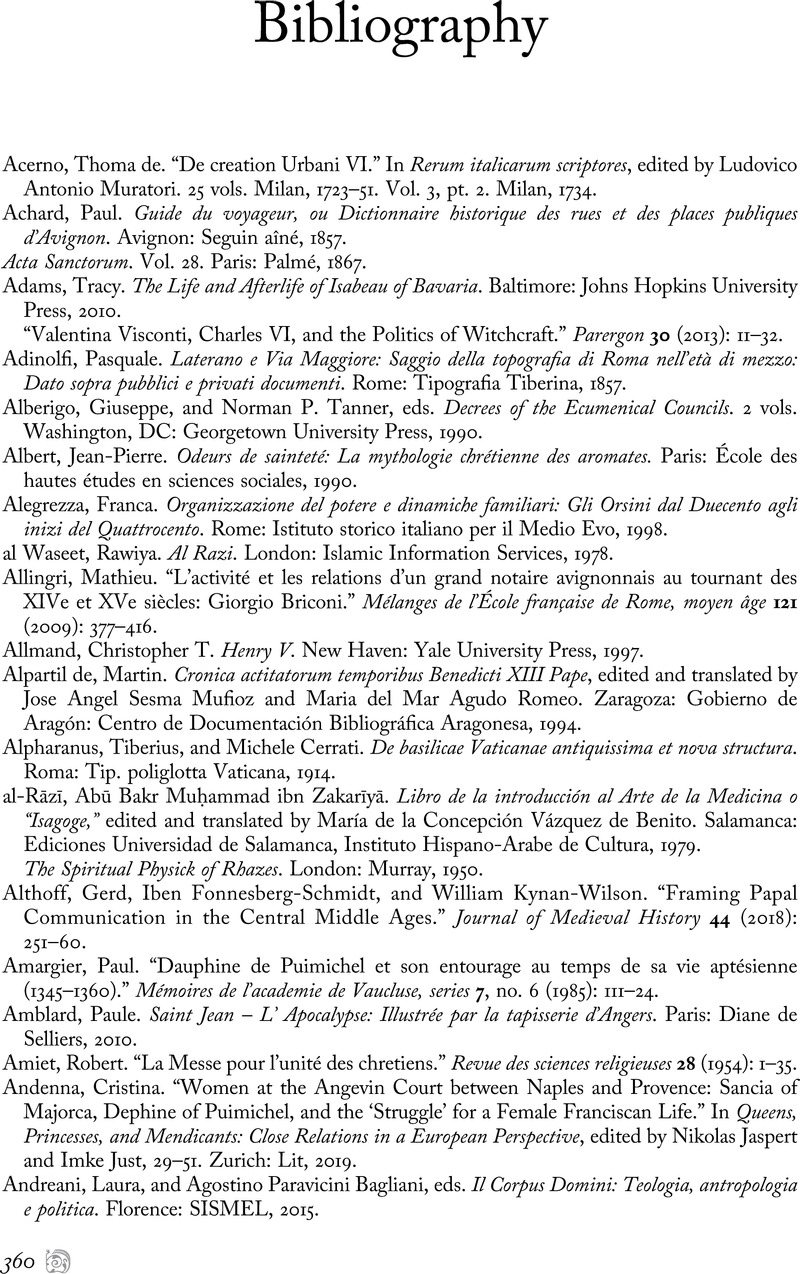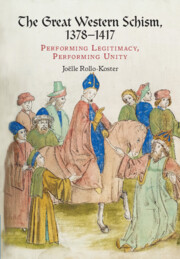Book contents
- The Great Western Schism, 1378–1417
- The Great Western Schism, 1378–1417
- Copyright page
- Dedication
- Contents
- Illustrations
- Maps
- Tables
- Acknowledgments
- Abbreviations
- Introduction
- 1 The Great Western Schism
- 2 Performing the Papacy, Performing the Schism
- 3 Images and Responses
- 4 Conflicting Legitimacy
- 5 Finding Unity in Liturgy
- 6 Rome during the Schism
- 7 Avignon during the Schism
- Conclusion
- Bibliography
- Index
- References
Bibliography
Published online by Cambridge University Press: 24 March 2022
- The Great Western Schism, 1378–1417
- The Great Western Schism, 1378–1417
- Copyright page
- Dedication
- Contents
- Illustrations
- Maps
- Tables
- Acknowledgments
- Abbreviations
- Introduction
- 1 The Great Western Schism
- 2 Performing the Papacy, Performing the Schism
- 3 Images and Responses
- 4 Conflicting Legitimacy
- 5 Finding Unity in Liturgy
- 6 Rome during the Schism
- 7 Avignon during the Schism
- Conclusion
- Bibliography
- Index
- References
Summary

- Type
- Chapter
- Information
- The Great Western Schism, 1378–1417 , pp. 360 - 399Publisher: Cambridge University PressPrint publication year: 2022



